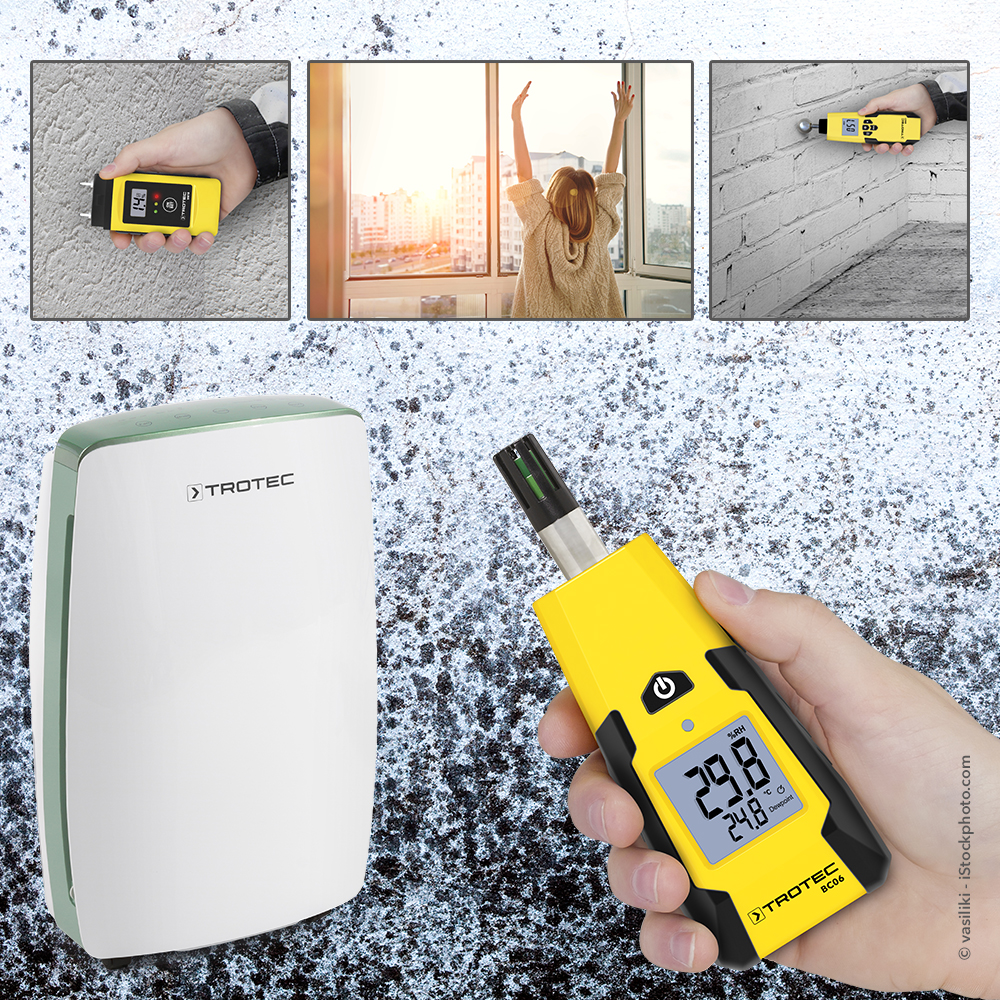 As the days are getting warmer, the heating thermostat control beckons. However, if the temperature in bedrooms at night or in hardly-used rooms sinks too low, the “mould alarm” is sure to sound! This is because damp air will start to condense in the cold parts of the home: the basis for the formation of mould that is dangerous to health. But where do mould and damp air actually come from?
As the days are getting warmer, the heating thermostat control beckons. However, if the temperature in bedrooms at night or in hardly-used rooms sinks too low, the “mould alarm” is sure to sound! This is because damp air will start to condense in the cold parts of the home: the basis for the formation of mould that is dangerous to health. But where do mould and damp air actually come from?
Mould can simply spread through the air. They find suitable living conditions in living areas, normally meaning areas which permanently are sufficiently damp, allow mould to settle and make itself at home there. As a consequence of these unwanted house guests considerable odours as well as allergic reactions are a possibility. You should not take such cases of mould lightly. Therefore, the question is: Where does the moisture come from? There are two possible answers to this: Either due to a leak or it condenses from the moisture in the air.
Water penetrates through a leak
Does moisture form on exterior walls, which then seeps through to the inside? Causes can range from cracks in the wall, unsealed areas in skirting or balconies or on guttering. These areas should be repaired and sealed up straight away. For tenants, your landlord is responsible for this. However, most of the time, water leaks within buildings are caused by leaks in water and drainage pipes or are due to silicone seals in showers and baths that need to be renewed. These occurrences may also be responsible for damp brickwork.
Moisture mostly comes from humidity
In the most common cases, it is the resident themselves whose lifestyle causes the moisture sufficient for mould formation. 10 litres of water can quickly be produced in a small apartment daily: due to sweat and breathing, each person releases around a litre into the air Moisture per day, showering being the biggest contributor to moisture, followed by cooking and drying laundry. Pets and house plants also add to this volume. Over the course of one week, at least 70 litres of water can collect – totalling two bath-tubs full per month.
Shock ventilation – the tricks of the trade
A large amount of moisture in rooms is there even though it is not in the air, because the air can only absorb so much water. Instead, moisture condenses on the nearest cool surface. In order that the Humidity in apartments does not exceed the recommended value of 40 to 60 percent, apartments must be regularly and thoroughly ventilated. Instead of ventilating for short periods every now and then, you should rely on the tried and tested “shock ventilation” method. When shock ventilating, open all windows to create a through draft. It is recommended to do this three times a day for five minutes at a time in winter and for 25 minutes at a time in summer. After getting up, showering or cooking, you should also ventilate your bedroom, bathroom and kitchen respectively.
Should I remove the mould myself or call a specialist?
You will be able to easily treat small areas of mould around a confined area of water ingress or caused by condensation. Surface mould formation can be combated using suitable sprays, with black marks disappearing after a few days. The situation is different, however, if the mould has penetrated into the building material. For example, if there is mould behind wooden panels or under parquet or laminate. In these cases, it is best that you consult a specialist company.
How you can best prevent mould formation
- In order to quickly determine whether there are high humidity areas in your apartment, you should monitor the humidity using a hygrometer. With climate measuring devices like the BC06, the BZ15M or the BZ20M from Trotec, this is an easy task. And it’s worth investing in a slightly more expensive device with a memory function, such as the BZ05.
- Using a special moisture measuring device, you can determine how damp a wall actually is. Trotec also has a professional selection of these devices available for you, which are best suited to your requirements: From instruments for simple moisture measuring, such as the BM12 or the BM18, to the sophisticated measuring devices such as the BM22, BM31 or the BM40.
- Dehumidifiers provide particularly easy dehumidification – and devices in Trotec brand quality will be a strong partner at your side: With the dehumidifiers from our Home Comfort series, you can manage optimal dehumidification and a healthy, pleasant climate within your own four walls, the whole year round.
That’s how dehumidification works today – with brand quality devices from Trotec
Find out about all of the advantages offered to you by our dehumidification and air quality management system from Trotec. Benefit further from the brand quality of our measuring devices and dehumidifiers, as well as from our current offer prices – in the Trotec Shop now!

